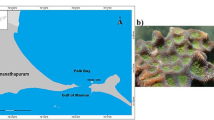Abstract
A taxonomic study was carried out on strain 22II-S11-z10T, which was isolated from the surface seawater of the Atlantic Ocean. The bacterium was found to be Gram-stain negative, oxidase and catalase positive, oval- to rod-shaped and non-motile. Growth was observed at salinities of 0.5–9 % and at temperatures of 10–41 °C. The isolate can reduce nitrate to nitrite, degrade gelatin and aesculin, but can not degrade Tween 80. Phylogenetic analysis based on 16S rRNA gene sequences indicated that strain 22II-S11-z10T belongs to the genus Actibacterium, with the highest sequence similarity to the type strain Actibacterium mucosum CECT 7668T (97.3 %). The DNA–DNA hybridization estimate value between strain 22II-S11-z10T and A. mucosum CECT 7668T was 19.30 ± 2.29 %. The principal fatty acids were identified as Summed Feature 8 (C18:1 ω7c/ω6c as defined by the MIDI system, 75.2 %) and Summed Feature 3 (C16:1 ω7c/ω6c, 6.9 %). The G+C content of the chromosomal DNA was determined to be 59.0 mol%. The respiratory quinone was determined to be Q-10 (100 %). Phosphatidylglycerol, phosphatidylcholine, two phospholipids, two aminolipids and two lipids were identified in the polar lipids. The combined genotypic and phenotypic data show that strain 22II-S11-z10T represents a novel species within the genus Actibacterium, for which the name Actibacterium atlanticum sp. nov. is proposed, with the type strain 22II-S11-z10T (=MCCC 1A09298T = LMG 27158T).

Similar content being viewed by others
Abbreviations
- MCCC:
-
Marine Culture Collection of China
References
Auch AF, Klenk HP, Goker M (2010a) Standard operating procedure for calculating genome-to-genome distances based on high-scoring segment pairs. Stand Genomic Sci 2:142–148
Auch AF, von Jan M, Klenk HP, Goker M (2010b) Digital DNA–DNA hybridization for microbial species delineation by means of genome-to-genome sequence comparison. Stand Genomic Sci 2:117–134
Ausubel F, Brent R, Kingston R, Moore D, Seidman J, Smith J, Struhl K (1995) Short protocols in molecular biology: a compendium of methods from Current protocols in molecular biology, 3rd edn. Wiley, New York
Dong X-Z, Cai M-Y (2001) Determinative manual for routine bacteriology. Scientific Press, Beijing (English translation)
Felsenstein J (1981) Evolutionary trees from DNA sequences: a maximum likelihood approach. J Mol Evol 17:368–376
Goris J, Konstantinidis KT, Klappenbach JA, Coenye T, Vandamme P, Tiedje JM (2007) DNA–DNA hybridization values and their relationship to whole-genome sequence similarities. Int J Syst Evol Microbiol 57:81–91
Kim OS, Cho YJ, Lee K, Yoon SH, Kim M, Na H, Park SC, Jeon YS, Lee JH, Yi H, Won S, Chun J (2012) Introducing EzTaxon-e: a prokaryotic 16S rRNA gene sequence database with phylotypes that represent uncultured species. Int J Syst Evol Microbiol 62:716–721
Liu C, Shao Z (2005) Alcanivorax dieselolei sp. nov., a novel alkane-degrading bacterium isolated from sea water and deep-sea sediment. Int J Syst Evol Microbiol 55:1181–1186
Lucena T, Ruvira MA, Garay E, Macian MC, Arahal DR, Pujalte MJ (2012) Actibacterium mucosum gen. nov., sp. nov., a marine alphaproteobacterium from Mediterranean seawater. Int J Syst Evol Microbiol 62:2858–2864
Luo R, Liu B, Xie Y, Li Z, Huang W, Yuan J, He G, Chen Y, Pan Q, Liu Y, Tang J, Wu G, Zhang H, Shi Y, Liu Y, Yu C, Wang B, Lu Y, Han C, Cheung DW, Yiu SM, Peng S, Xiaoqian Z, Liu G, Liao X, Li Y, Yang H, Wang J, Lam TW, Wang J (2012) SOAPdenovo2: an empirically improved memory-efficient short-read de novo assembler. Gigascience 1:18
Meier-Kolthoff JP, Auch AF, Klenk HP, Goker M (2013) Genome sequence-based species delimitation with confidence intervals and improved distance functions. BMC Bioinform 14:60
Richter M, Rossello-Mora R (2009) Shifting the genomic gold standard for the prokaryotic species definition. Proc Natl Acad Sci USA 106:19126–19131
Rzhetsky A, Nei M (1992) Statistical properties of the ordinary least-squares, generalized least-squares, and minimum-evolution methods of phylogenetic inference. J Mol Evol 35:367–375
Saitou N, Nei M (1987) The neighbor-joining method: a new method for reconstructing phylogenetic trees. Mol Biol Evol 4:406–425
Sambrook J, Fritsch EF, Maniatis T (1989) Molecular cloning: a laboratory manual, 2nd edn. Cold Spring Harbor Laboratory, Cold Spring Harbor
Sasser M (1990) Identification of bacteria by gas chromatography of cellular fatty acids, MIDI Technical Note 101. MIDI, Newark
Shieh WY, Chen YW, Chaw SM, Chiu HH (2003) Vibrio ruber sp. nov., a red, facultatively anaerobic, marine bacterium isolated from sea water. Int J Syst Evol Microbiol 53:479–484
Skerman VBD (1967) A guide to the identification of the genera of bacteria, 2nd edn. Williams & Wilkins, Baltimore
Tamura K, Peterson D, Peterson N, Stecher G, Nei M, Kumar S (2011) MEGA5: molecular evolutionary genetics analysis using maximum likelihood, evolutionary distance, and maximum parsimony methods. Mol Biol Evol 28:2731–2739
Wayne LG, Brenner DJ, Colwell RR, Grimont PAD, Kandler O, Krichevsky MI, Moore LH, Moore WEC, Murray RGE, Stackebrandt E, Starr MP, Trüper HG (1987) Report of the ad hoc committee on reconciliation of approaches to bacterial systematics. Int J Syst Bacteriol 37:463–464
Acknowledgments
This work was financially supported by COMRA program (No. DY125-15-R-01), Public Welfare Project of SOA (201005032) and National Infrastructure of Natural Resources for Science and Technology Program of China (No. NIMR-2013-9).
Author information
Authors and Affiliations
Corresponding author
Additional information
Guizhen Li and Qiliang Lai contributed equally to this work.
Transmission electron micrographs of cells of strain 22II-S11-z10T, polar lipids of strain 22II-S11-z10T, Maximum-Likelihood tree and Minimum Evolution tree are available as supplementary figures in ANTO Online.
Electronic supplementary material
Below is the link to the electronic supplementary material.
Rights and permissions
About this article
Cite this article
Li, G., Lai, Q., Sun, F. et al. Actibacterium atlanticum sp. nov., isolated from surface seawater of the Atlantic Ocean. Antonie van Leeuwenhoek 106, 325–330 (2014). https://doi.org/10.1007/s10482-014-0203-7
Received:
Accepted:
Published:
Issue Date:
DOI: https://doi.org/10.1007/s10482-014-0203-7




